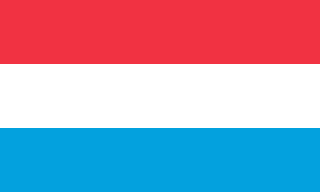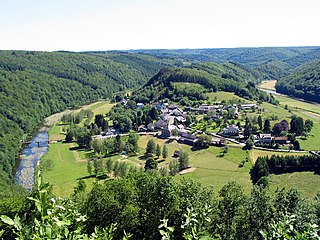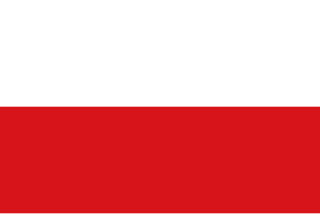The following is a list of governors of Luxembourg.
From the 15th to the 19th centuries, the Duchy (later Grand-Duchy) of Luxembourg was ruled by the French, the Burgundians, the Spanish and Austrian Habsburgs, and the Dutch.
From 1848 onwards, when Luxembourg received its first constitution, it started to be administered by a government in the modern sense of the word, one which was accountable to an elected Luxembourgish legislature.
| Start date | End date | Name | Notes |
|---|---|---|---|
| French Governors | |||
| 1 September 1542 | 10 September 1542 | Claude de Lorraine, Duke of Guise (1496-1550) | |
| 12 September 1543 | 1544 | François d'Anglure (died 1544) | |
| 1544 | 6 August 1544 | Francis I, Duke of Nevers (1516-1562) | |
| Spanish Governors and Captains-General | |||
| 2 July 1545 | 23 May 1604 | Peter Ernst I von Mansfeld-Vorderort (1517-1604) | (French prisoner from 22 June 1552 to 18 May 1557) |
| 1552 | 1553 | Lamoral, Count of Egmont | Representing Mansfeld |
| 1553 | 1555 | Martin van Rossem (1490-1555) | Representing Mansfeld |
| 1555 | 1556 | Charles de Brimeu, Count of Megen | Representing Mansfeld |
| September 1576 | February 1577 | Johann von Naves, sieur de Sivry | Provisionally for Mansfeld |
| June 1604 | 1627 | Florent, comte de Berlaimont (died 1627) | |
| April 1627 | 1636 | Christopher of East Frisia (1569–1636) | |
| 1636 | 1642 | Philipp Dietrich von Manderscheid-Blankenheim (1596-1653) | Andrea Cantelmo (August 1637 to November 1637) |
| 18 January 1642 | 1648 | Johann von Beck (1588-1648) | The first Luxembourger |
| 15 January 1646 | November 1646 | Alonso, marchese Strozzi | (Provisionally for Beck) |
| 1648 | 19 June 1650 | Philippe François de Croy, Duke of Havré (1610–1650) | |
| 1650 | Gilles, marquis de Mollinguin | (Provisionally) | |
| August 1650 | 1652 | Alonso, marchese Strozzi | (Provisionally) |
| 1652 | 1654 | Francesco Sanchez de Pardo | (Provisionally) |
| 24 January 1654 | 12 January 1675 | Philippe de Ligne-Arenberg, prince de Chimay et de Croy d'Arenberg (1619-1675) | (a Duke from 9 June 1645) |
| 1675 | Jean-Charles-Chrétien de Sandas et Louvegnies, Baron de Grandcourt | (Provisionally) | |
| 1676 | Jean Charles de Watteville Marquis de Conflans | (Provisionally) | |
| 1675 | 1680 | John Francis Desideratus, Prince of Nassau-Siegen (1626-1699) | |
| 1680 | 1684 | Ernest-Alexandre Dominique de Ligne-Arenberg Croÿ, prince de Chimay et de Croÿ d'Arenberg (1643-1686) | |
| French Governors | |||
| 12 June 1684 | July 1686 | Henri de Lambert, marquis de Lambert et de Saint Bris, Baron de Citry (1631-1686) | Lieutenant-General |
| 10 August 1686 | July 1687 | Louis François, duc de Boufflers (1644-1711) | |
| 25 July 1687 | 1690 | Nicolas Catinat (1637-1712) | (a Lieutenant-General from March 1690) |
| 1690 | 1697? | Henri d'Harcourt (1654-1718) | |
| 1697 | Louis-François du Parc, Marquis de Locmaria (1647-1709) | ||
| Spanish Governors and Captains-General | |||
| 15 November 1697 | 1713 | Graf Jean-Frédéric d'Autel (1645-1716) | The second Luxembourger |
| Hessian Governors | |||
| 1713 | 1714 | Reinhardt Vincent von Hompesch (1660-1733) | |
| 1714 | 1715? | Johann Rabo van Keppel (1671?- 1733) | |
| Austrian Governors | |||
| 5 January 1715 | 4 December 1716 | Bertram Anton Freiherr von Wachtendonk | |
| 4 December 1716 | 17 April 1719 | Johann Franz von Bronkhorst zu Gronsveld und Eberstein (d. 1719) | |
| 1719 | July 1720 | Maximilien de Pasqualini (died 1720) | |
| 1720 | 1722 | Adolf Christian Freiherr von Galen (died 1722) | |
| March 1722 | 27 April 1727 | Johann Wilhelm Freiherr von Unruhe (died 1727) | |
| 29 May 1727 | October 1729 | Graf Franz Anton Paul von Wallis (1677-1737) | |
| October 1729 | 7 May 1730 | Philippe Henri de Magawly, Baron de Cabry (1675–1756) | 1st time Provisionally |
| 7 May 1730 | 22 May 1731 | Wilhelm Reinhard von Neipperg (1684-1774) | 1st time |
| 22 May 1731 | 22 February 1732 | Philippe Henri de Magawly, Baron de Cabry | 2nd time, Provisionally |
| 22 February 1732 | 5 May 1733 | Adam Sigismund Freiherr von Thüngen (1687-1745) | 1st time Provisionally Fort Thüngen |
| 5 May 1733 | 22 June 1734 | Wilhelm Reinhard von Neipperg | 2nd time |
| 22 June 1734 | 30 July 1736 | Sigismund Freiherr von Thüngen | 2nd time (provisionally) |
| 30. July 1736 | January 1737 | Wilhelm Reinhard von Neipperg | 3rd time |
| January 1737 | April 1737 | Georges Adolphe d'Olizy (died 1739) | 1st time (provisionally) Fort Olizy |
| April 1737 | May 1737 | Antoine de Peissant, comte de Rumigny (died 1748) | (Provisionally) |
| May 1737 | January 1738 | Wilhelm Reinhard von Neipperg | 4th time |
| January 1738 | 16 May 1739 | Georges Adolphe d'Olizy | 2nd time (Provisionally) |
| 1739 | 17 September 1742 | Carl Urban, Count of Chanclos (1686-1761) | Provisionally |
| 17 September 1742 | 1743 | Holtzapfel | Provisionally |
| 1743 | March 1744 | Melligny | Provisionally |
| March 1744 | 1753 | Wilhelm Reinhard von Neipperg | 5th time |
| 1753 | 20 October 1755 | Eberhard von Gemmingen-Hornberg (died 1767) | 1st time (provisionally) |
| 20 October 1755 | 1766 | Ernst Dietrich Marschall von Burgholzhausen (1692-1771) | |
| 1756 | 1763 | Eberhard Freiherr von Gemmingen | 2nd time, provisionally for Marschall von Biberstein |
| 1766 | May 1773 | Maximilian Friedrich Ernst forst von Salm-Salm (1732 -1773) | |
| 2 January 1767 | 1785 | Christian Jakob Freiherr von Vogelsang | Provisionally for Salm-Salm until May 1773 |
| 1 September 1785 | 7 June 1795 | Blasius Columban von Bender (1713–1798) | (in Opposition 15 December 1792 until 28 April 1793) |
| French Republic and Empire Governors | |||
| 1800 | 1800 | Johann Birnbaum | |
| 1800 | 1808 | Jean-Baptiste Lacoste | |
| 1808 | 1814 | André Joseph Jourdan | |
| Dutch Governors | |||
| 2 September 1815 | 31 December 1830 | Jean Georges Othon Victorin M. Zacharie Willmar (1763-1831) | Provisionally until 29 May 1817; his son Jean-Jacques Willmar later became prime minister |
| Dutch Governors-General | |||
| 1 January 1831 | 5 March 1831 | Jean Leclerc (1765-1836) | Provisionally |
| 5 March 1831 | 27 May 1831 | Prince Bernhard of Saxe-Weimar-Eisenach (1792–1862) | |
| Belgian Governors (in Arlon) | |||
| 5 October 1830 | 16 October 1830 | François d'Hoffschmit (1797-1854) | (commissioner-general) |
| 16 October 1830 | 1832 | Jean Baptiste Thorn (1783-1841) | |
| 19 April 1832 | 21 September 1834 | Jean N. Rossignon | |
| 21 September 1834 | 10 December 1834 | Feuillien-Charles-Marie-Joseph de Coppin (1800-1887) | |
| 10 December 1834 | 19. January 1839 | Victorin Jean François, baron de Steenhault (1791-1841) | |
| Head of the government commission (in Luxembourg) | |||
| 27 May 1831 | 18 June 1839 | Friedrich Wilhelm von Goedecke (1771-1857) | |
| Head of the civil administration | |||
| 16 June 1839 | 21 October 1840 | Hans Daniel Ludwig Friedrich Hassenpflug (1794-1862) | |
| 21 October 1840 | 1 January 1842 | Jean Baptiste Gellé (1777-1847) | |
| Governor | |||
| 1 January 1842 | 1 August 1848 | Gaspar-Théodore-Ignace de la Fontaine (1787-1871) | Provisionally until 6 June 1842 |














